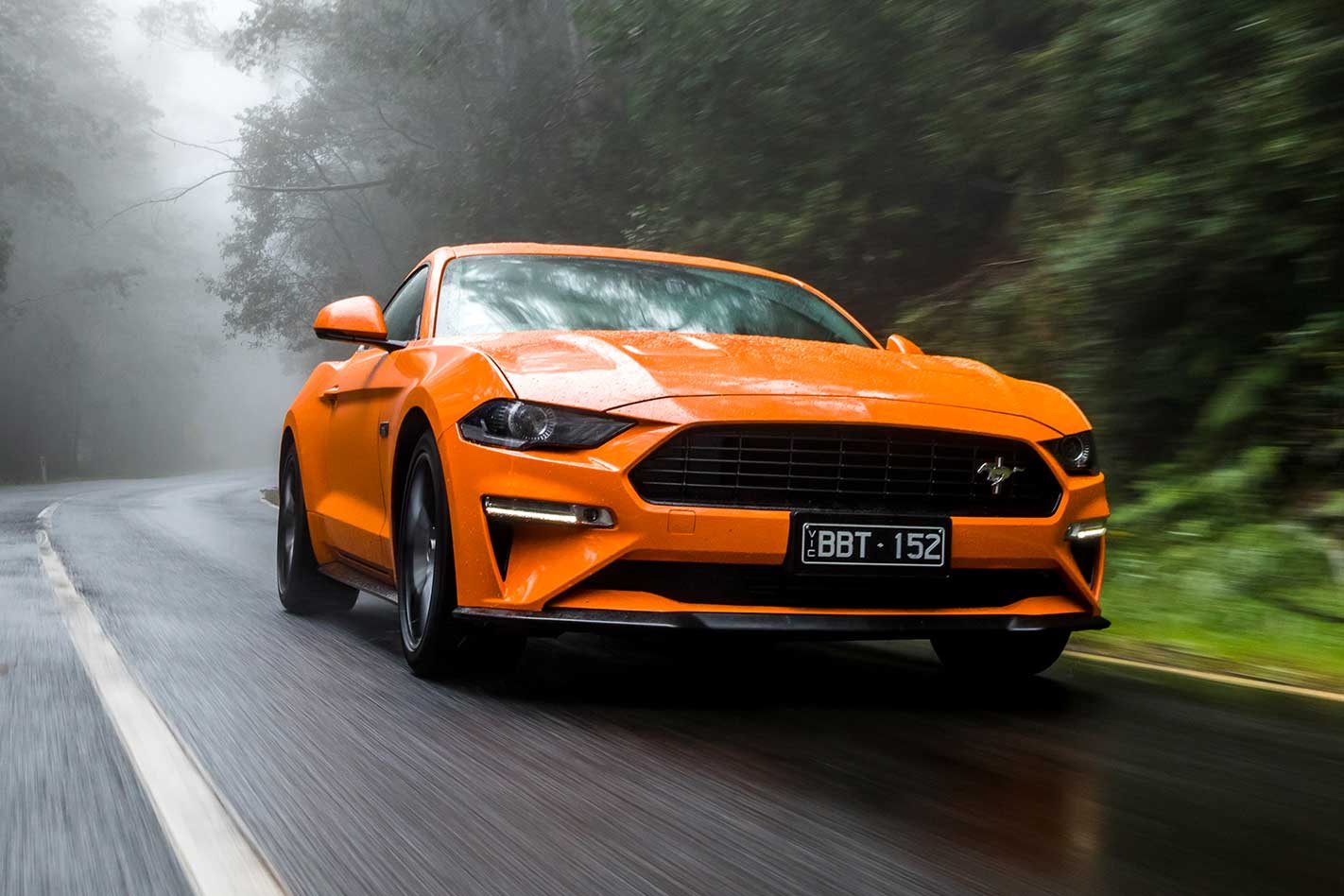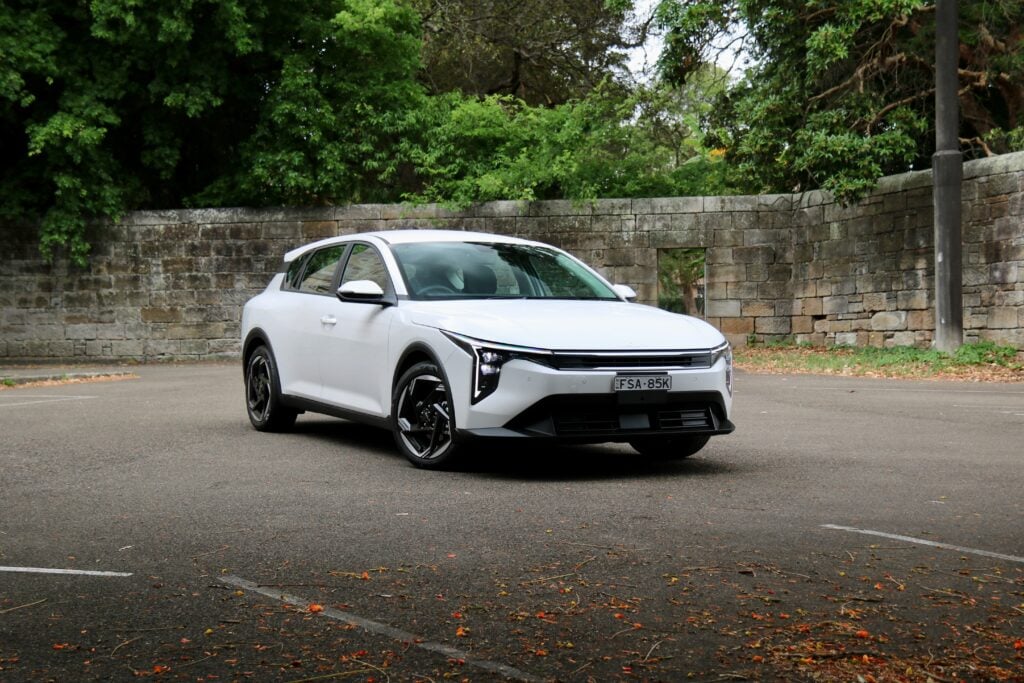You only need to read the roll call on the new Ford Mustang range to see where Ford focused its energies. While the V8-powered GT remains unchanged both in title and mechanical specification, it’s the often forgotten turbo four-cylinder sibling that has used the MY20 update as its chance to step into the spotlight.
The entry-level Mustang’s name has evolved from the simple and somewhat dreary ‘EcoBoost’ tag into the very serious-sounding ‘2.3L High Performance’. We’ll just call it the HP from here on in.
You can see Ford has also taken the opportunity to inject some attitude into the four-cylinder ’Stang’s looks, as all HPs feature new grilles and badges to advertise a new attitude. Closer inspection reveals horizontal slats and a new galloping pony badge, offset on the car’s passenger side, replace the 2019 model’s honeycomb radiator grille.
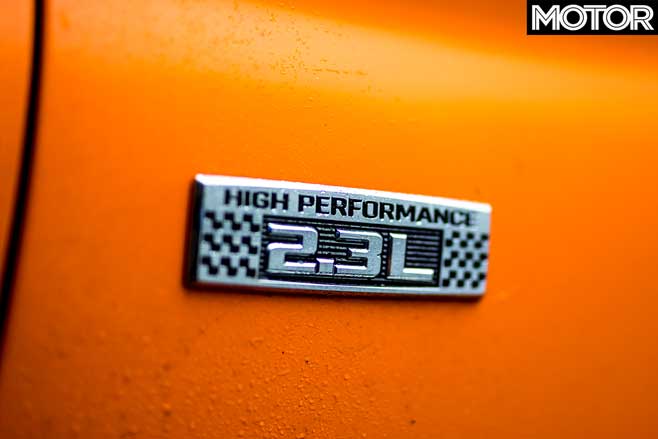
The new red-white-blue ‘tri-bar’ stripe behind the front badge also appears on the boot, while specific ‘2.3L High Performance’ badges are worn on the front guards.
Four new colours also join the Mustang’s palette, but we feel the Twister Orange hue clinging to our loan car is the most symbolic of them all, given that’s the colour you get after mixing red and yellow – the colours of the Spanish flag…
It turns out that Spain and the Mustang have a fair bit in common, too. Besides the Spaniards being the ones who introduced the wild horse breed to the Americas in the 1500s, Ford’s plant in Valencia builds this car’s 2.3-litre four-cylinder turbocharged engine. Valencia also made the 2.3-litre four in the Focus RS.
Despite the similarities between the two engines, including an identically sized 63mm compressor wheel (that’s 3mm bigger than the EcoBoost’s), it hasn’t been as simple as restarting the hot hatch’s engine production line.
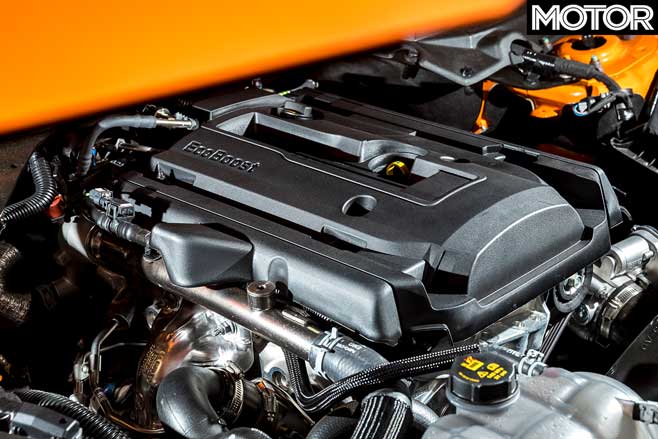
The new HP’s turbocharger, along with other components, are redesigned to suit a north-south orientation. The Mustang’s engineers also focused on a specific tune and broadening the torque spread in the HP’s mid-range.
That might be why it’s so easy to hustle the HP when the engine is coupled with the 10-speed automatic. As well as the two feeling well matched for frugal commuting, we used only 9.08L/100km on a drive on highway and mountain roads, the shortly stacked ratios keeping the four-banger in its sweet zone.
Ford claims the HP delivers its 448Nm at 3800rpm, yet it’s the fact that it produces 90 per cent of that maximum between 2500-5300rpm that helps the HP feel so urgent and responsive under foot. It’s a flexible engine, and the 6200rpm power peak makes the journey to its 6500rpm indicated redline worthwhile.
Mind you, with ‘only’ 236kW and 448Nm on tap, or an increase of 12kW and 7Nm on the MY19 EcoBoost, it doesn’t feel that much faster. After a few seconds on full throttle the speedo reveals you’re never carrying as much speed as you think.
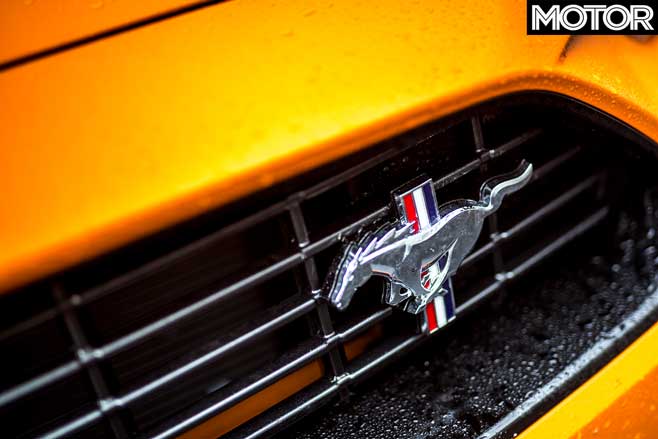
That’s because the HP still has to lug around a lot of pony. Even with the four-cylinder engine erasing almost half the V8’s mass in the car’s nose, dropping 68kg in the process, it still tips the scales at 1716kg with the automatic transmission.
Ford provides no acceleration data to reveal how much faster the new HP is than the old four, and we remain sceptical of any drastic improvement on the MY19 until we complete performance testing of our own, but it’s clear that the four-cylinder Mustang package is more about cohesiveness than outright excitement.
Much of this centres around the HP’s favourable 53/47 per cent weight distribution, which gives it a front-end that’s more direct and responsive than any V8-powered GT. Even the added steering weight in Sport or Sport Plus drive modes fail to dull its pleasant, light feel.
It helps, of course, that Aussie cars have had their pick of America’s optional Handling Package and score new 32mm front and 24mm rear solid sway bars. They help the HP feel more tied down and, given the rear end benefits from a larger increase in roll stiffness, the HP is more controllable on the throttle when dallying with oversteer.

Combined with the standard-fit Torsen diff, the 2.3-litre engine’s fat mid-range and its improved throttle response, you will find the HP gives options in corners. You can either float it in and wrestle with the grip offered by the Pirelli P Zeros, or stab the throttle and tweak the rear angle.
That said, trying conditions can expose the limits of the 255mm-wide Pirellis that feature on a square fitment, as the car is more eager to break away on wet roads.
Given the car’s mass, its 348mm/330mm-sized brakes can feel a bit underdone, but they have enough finesse to salvage some confidence when setting up a corner. Besides, the HP never generates the sort of energy to warrant anything larger.
There’s also no meaningful upgrade in theatre, despite the active exhaust that’s fitted as standard. While the MY19 was a big improvement in this regard, and we love the pops released when you lift off, cycling through the drive modes fails to find any musicality. Thankfully the turbocharger keeps things interesting and you can hear it spooling through the exhaust.
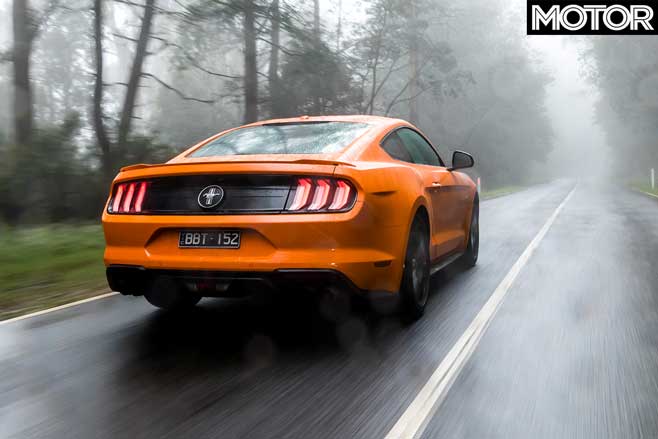
Swap winding roads for straight ones and the HP is excellent as a cruising device. Although Ford offers Magneride adaptive dampers as an option, the single-tune suspension on our test car served up a gentler ride than a GT at a cruise and at low speeds, which no doubt softer springs and a lighter kerb weight helped create. It’s well judged.
Inside, there isn’t much the HP owner would want for in the way of creature comforts and technology. With either transmission option, you score B&O sound and Apple CarPlay or Android Auto, accessed through SYNC3, along with power and heated/cooled seats. Add a full suite of adaptive safety features along with swathes of leather inside and it all feels a touch more premium than you might expect for a ‘base’ car.
Conversely, the price for Ford’s entry-level Mustang creeps up $1000 to $50,990 (before on roads) for the six-speed manual, and $53,990 for the 10-speed automatic. When you consider that will buy most of today’s best hot hatches, it’s a lot of money for something slower and, with only two doors, less practical.
But if for some reason your priorities hinge on the size of your fuel bills rather than the experience under your right foot, and the Mustang’s retro lines weaken your knees, then the HP offers more than just a heady price advantage (of $13K) on the V8.
It feels like Ford this time around made more time to develop the four-cylinder into its own car. And while that might come with its own inherent flaws, it also comes with advantages. And that makes this replacement for displacement more complete than ever for the undiscerning ’Stang suitor.
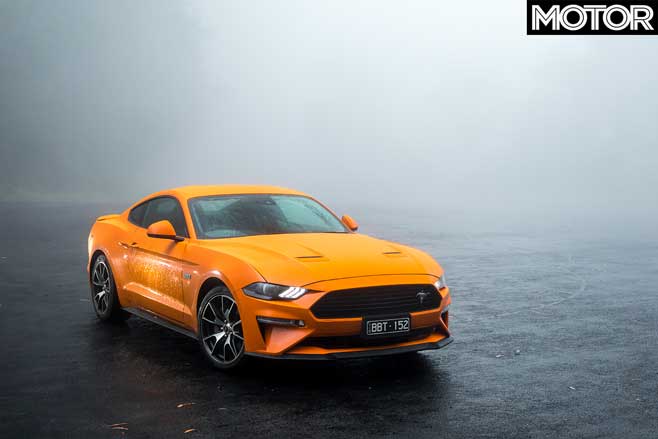
2020 FORD MUSTANG 2.3L HIGH PERFORMANCE SPECS Engine: 2261cc inline-4, DOHC, 16v, turbo Power: 236kW @ 6200rpm Torque: 448Nm @ 3800rpm Weight: 1716kg 0-100km/h: 6.0sec (estimated) Price: $53,990 (auto)
Likes: Chassis balance; frugality; tough-looking exterior; decent ride; more responsive Dislikes: Uninspiring exhaust noise; still feels a bit slow; getting expensive
Rating: 3.5 out of 5 stars


